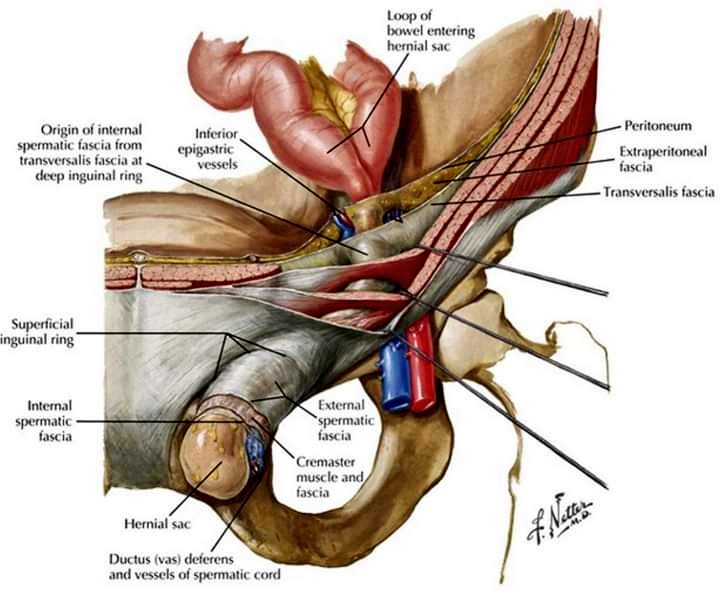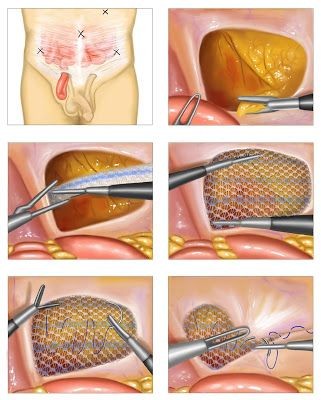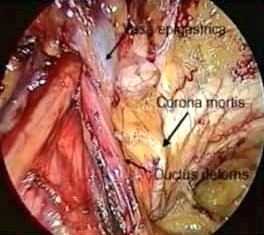#SoMe4IQLatAm #SoMe4Surgery


💠Keep Fatty Tissue with the Muscle of the Inguinal Floor
💠Avoid Exposing Muscle to Preserve Nerves in Zone 1 and Inferior Epigastric Vessels in Zone 3
💠Don't Overdissect Nerves
💠Zone 3 Dissection is Left for Last⤴️⤴️
💠Pubic Symphysis Medially
💠At Least 2 cm below pubis at Zone 2
💠Overlap Direct and Femoral Triangle by 3 - 4 cm
💠Prevents Lifting by Distending Bladder
💠Reduce Direct Hernia...👇🏻👇🏻
💠Extent of Inferior Peritoneum Dissected
💠Vas Crossing External Iliac Vein (Zone 3)
💠lliopsoas Muscle Identified
💠In Women, Round Ligament can be transected 1 cm proximal to Deep Ring
Rule 6:) Management of Indirect Sac
💠In Large or Inguinoscrotal Hernias, it is recommended to transect and.....⤵️⤵️👇🏻
💠Only feasible after identifying all aspects of the cord
💠Avoids excess traction and cord/ testicle injury, hematoma, ischemic orchitis
💠May form pseudo-hydrocele, easier to manage
Rule 9:) Mesh Fixation
💠Not Necessary in most MIS Cases
💠Recommended in Large Direct M3 Hernias
💠Tack Recommendations: Medially Avoid Pubic Bone (Use Cooper's) Laterally Above IPT (2 cm), Avoid InferiEpigastrics
💠External Palpation with Tack Firing
💠Consider Gluel / Self-Gripping
💠Fixation Cannot Fix Inadequate Dissection
Nerves at Risk in MIS Inguinal Hernia Repair: No Fixation
💠Genital Branch of Genitofemoral Nerve
💠Femoral Branch of Genitofemoral Nerve
Rule 10:) Deflate Under Direct Visualization
💠Prevent Peritoneum Folding or Rolling Mesh
💠Prevents Meshoma and Clamshelling
💠Suture Instead of Tacking Peritoneal Flap is Recommended
💠Closure of Gaps is Recommended








